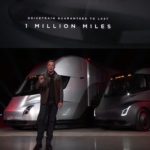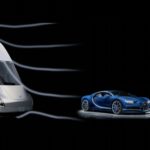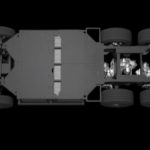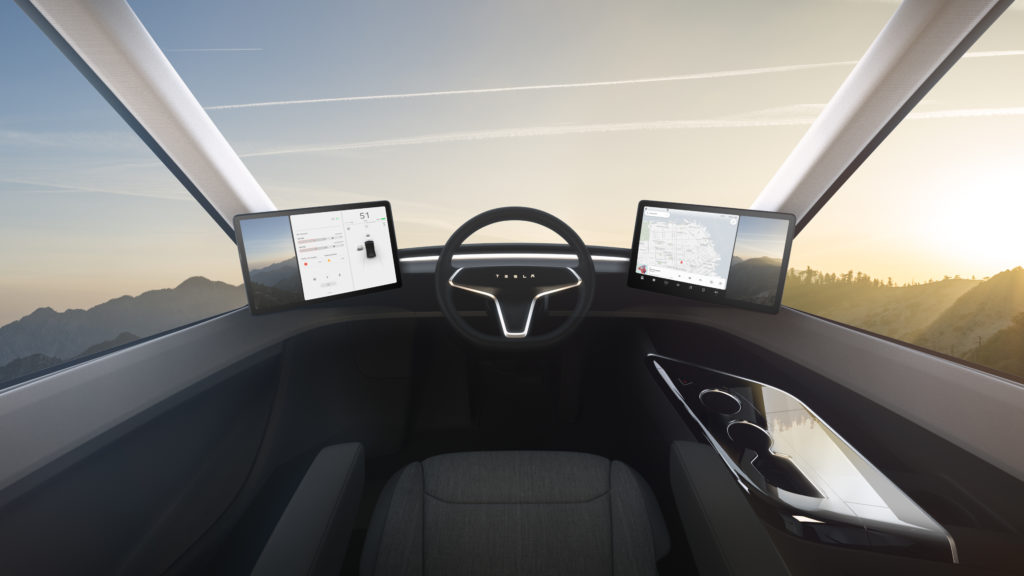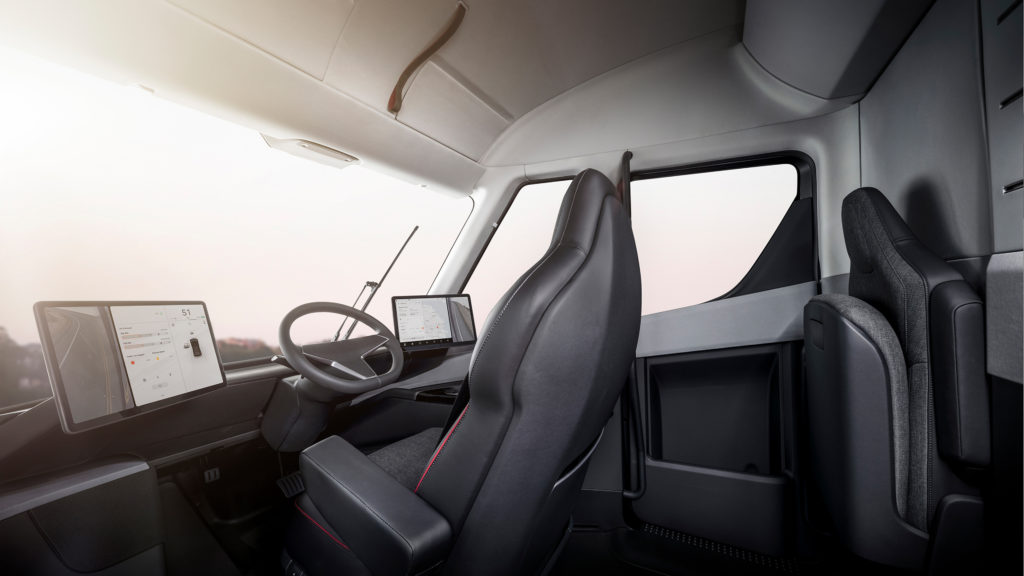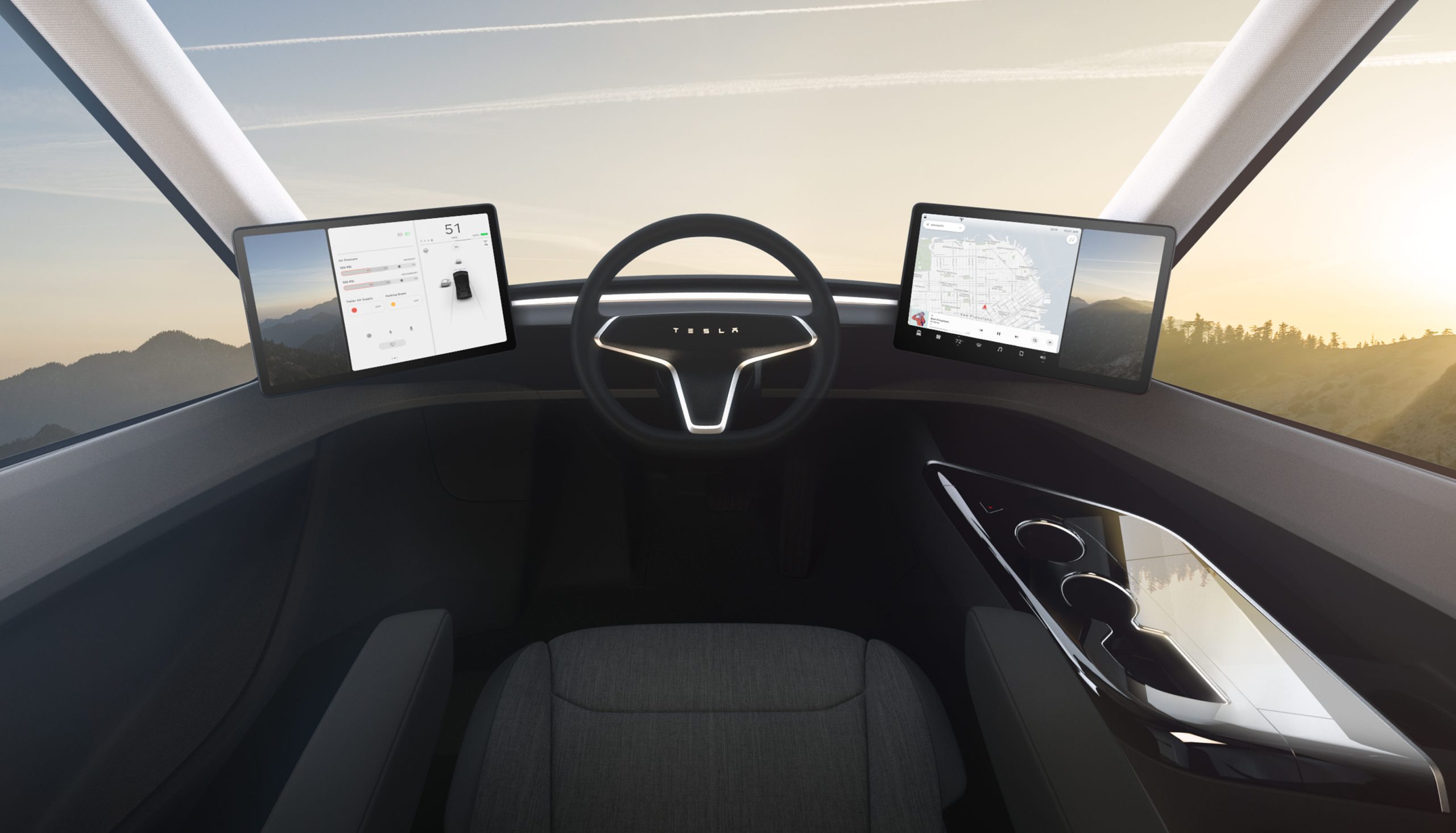
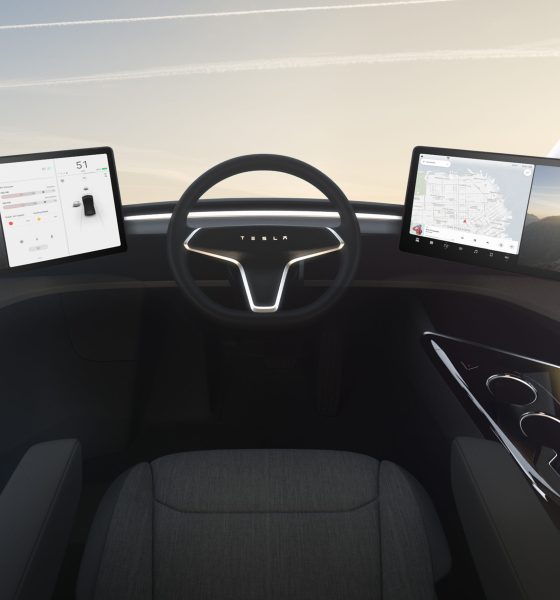
Investor's Corner
How Tesla’s Semi will dramatically alter the trucking industry
The Tesla Semi offers something to the trucking industry that could drastically alter the entire freight moving sector. The trucking industry has seen major changes since it began roughly a century ago and has, despite the assumptions of many outsiders looking in, been one of the more technologically-advanced industries in our nation. Trucks themselves have seen huge changes in the past few decades while the freight industry as a whole has been reinvented and revamped multiple times over in that same time period.
Nasdaq.com contributor Martin Tillier mentions the impacts that the Tesla Semi and others with similar game-changing technologies will have on the trucking industry long-term. Most notably with autonomous trucks and their electric powertrains.
“The technological change that benefits trucking and delivery businesses has been widely reported, but in my experience most people that I ask about it focus on the potential negatives rather than looking for opportunities,” writes Tillier. “..they ignore the biggest beneficiary of all: trucking companies. They are looking at a future where two of their major costs, fuel and drivers, will be dramatically lower..”
Those salient points are much bigger-picture than most commenting on the Tesla Semi and other related vehicles would note. Just about every major manufacturer of commercial vehicles, including Class 8 trucks, is getting in on the electrification game and many are also building towards automation. The companies most often noted, like Tesla and Nikola, are actually side-players compared to the already-established heavy-duty builders like Paccar (Kenworth, Peterbilt), Daimler, Volvo, and the like. Even manufacturers like Cummins are working with alternatives to petroleum-burning drivetrains.
The stakes are huge. According to the American Trucking Associations, over 70 percent of the freight (by tonnage) moved in the United States is moved by truck. There are about ten and a half billion tons of freight moved around the U.S. annually and about 3.6 million Class 8 trucks on the road pulling that freight.
The electrification of trucks is a big step. It won’t happen really quickly, but it will happen eventually. How, exactly, that electrification comes will depend on a lot of things. It could be the battery-powered Tesla Semi or it could be the hydrogen fuel cell-run Toyota-Kenworth collaboration. Or any mixture of things, including the range-extending turbine proposed for the original Nikola design or that of Capstone. Whatever the solution or solutions are, freight-hauling trucks of all sizes are going to become electric. That’s a given.
Why? For the same reason they all went to diesel a few decades ago. It’s more efficient and thus cheaper. Before diesel, most trucks were powered by gasoline and were extremely inefficient, hauling less weight and getting worse fuel economy. Diesel itself saw many changes over time as the engines it powered improved and emissions fell. Currently, trucks use around 38 billion gallons of diesel fuel a year. At four dollars a gallon, that’s about $152 billion in fuel. With electricity, costs could be a fraction of diesel. Roughly a quarter of the cost, in fact, in worst-case assumptions. More optimistic numbers would put it in the 1/16th to 1/8th fractions.
The gains with autonomous self-driving or driving assist technology are even higher. In trucking, the highest cost to the trucking company is the driver behind the wheel, with wages and benefits–not to mention legalities and downtime–having the highest impact on the bottom line. A truck driver can legally drive for 11 hours per day and most drivers average about 600 miles daily. An autonomous truck could drive 24/7, stopping only to load/unload or refuel. Self-driving trucks would also solve a problem that’s long plagued the trucking industry: driver shortages.
Truck drivers will lose jobs, yes. Eventually. Remember, we’re talking decades here, not years. When (not if) automated big trucks take over as the bulk of the industry’s means of moving freight, most drivers will be required to find new careers. We must remember, however, that truck driving is essentially made up of a labor force which has little formal training and mostly on-the-job experience as their primary resume point. These drivers become more skilled with time and hence demand higher wages. The most skilled workers in truck driving tend also be those closest to retirement. Replacements for those skilled drivers are new drivers who’ve completed perhaps three weeks of trucking school and a month of over-the-road training with a slightly more skilled driver as a mentor. This doesn’t make trucking an easy job, but it does mean that those with the most skills are the least likely to lose their jobs when automation becomes the norm.
We can argue until our fingers bleed, typing about the feasibility of the Tesla Semi and Elon Musk’s promises for the truck’s capabilities. Whether Tesla delivers on those promises is moot; as we know that someone, somewhere, and sometime very soon will deliver on similar promises regardless. The trucking industry is going through another sea change. Those in technology, used to a new iPhone every year and who hashtag about cryptocurrencies, might consider a decade or two as a long time to wait. Those in manufacturing and transportation, however, see twenty years as a single generation and their version of 2.0 has huge economic impacts on the nation’s and world’s economies.
The trucking industry knows that electrification and automation are coming. Fast. The Tesla Semi may or may not physically bring that revolution, but it certainly does symbolize it.

Investor's Corner
Tesla analyst realizes one big thing about the stock: deliveries are losing importance
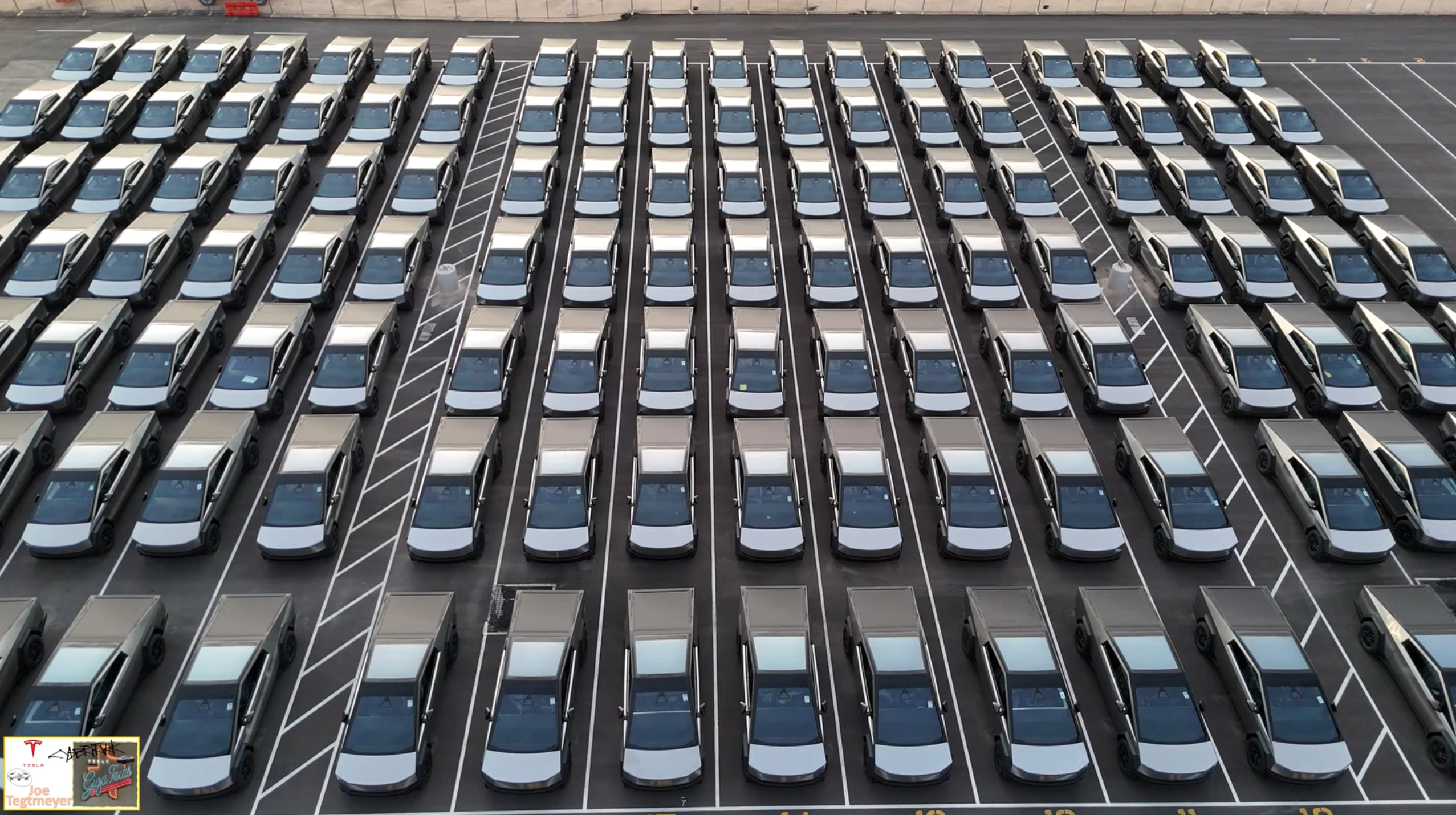
Tesla analyst Dan Levy of Barclays realized one big thing about the stock moving into 2026: vehicle deliveries are losing importance.
As a new era of Tesla seems to be on the horizon, the concern about vehicle deliveries and annual growth seems to be fading, at least according to many investors.
Even CEO Elon Musk has implied at times that the automotive side, as a whole, will only make up a small percentage of Tesla’s total valuation, as Optimus and AI begin to shine with importance.
He said in April:
“The future of the company is fundamentally based on large-scale autonomous cars and large-scale and large volume, vast numbers of autonomous humanoid robots.”
Almost all of Tesla’s value long-term will be from AI & robots, both vehicle & humanoid
— Elon Musk (@elonmusk) September 11, 2023
Levy wrote in a note to investors that Tesla’s Q4 delivery figures “likely won’t matter for the stock.” Barclays said in the note that it expects deliveries to be “soft” for the quarter.
In years past, Tesla analysts, investors, and fans were focused on automotive growth.
Cars were truly the biggest thing the stock had to offer: Tesla was a growing automotive company with a lot of prowess in AI and software, but deliveries held the most impact, along with vehicle pricing. These types of things had huge impacts on the stock years ago.
In fact, several large swings occurred because of Tesla either beating or missing delivery estimates:
- January 3, 2022: +13.53%, record deliveries at the time
- January 3, 2023: -12.24%, missed deliveries
- July 2, 2024: +10.20%, beat delivery expectations
- October 3, 2022: -8.61%, sharp miss due to Shanghai factory shutdown
- July 2, 2020: +7.95%, topped low COVID-era expectations with sizeable beat on deliveries
It has become more apparent over the past few quarters that delivery estimates have significantly less focus from investors, who are instead looking for progress in AI, Optimus, Cybercab, and other projects.
These things are the future of the company, and although Tesla will always sell cars, the stock is more impacted by the software the vehicle is running, and not necessarily the vehicle itself.
Investor's Corner
SpaceX IPO is coming, CEO Elon Musk confirms
However, it appears Musk is ready for SpaceX to go public, as Ars Technica Senior Space Editor Eric Berger wrote an op-ed that indicated he thought SpaceX would go public soon. Musk replied, basically confirming it.

Elon Musk confirmed through a post on X that a SpaceX initial public offering (IPO) is on the way after hinting at it several times earlier this year.
It also comes one day after Bloomberg reported that SpaceX was aiming for a valuation of $1.5 trillion, adding that it wanted to raise $30 billion.
Musk has been transparent for most of the year that he wanted to try to figure out a way to get Tesla shareholders to invest in SpaceX, giving them access to the stock.
He has also recognized the issues of having a public stock, like litigation exposure, quarterly reporting pressures, and other inconveniences.
However, it appears Musk is ready for SpaceX to go public, as Ars Technica Senior Space Editor Eric Berger wrote an op-ed that indicated he thought SpaceX would go public soon.
Musk replied, basically confirming it:
As usual, Eric is accurate
— Elon Musk (@elonmusk) December 10, 2025
Berger believes the IPO would help support the need for $30 billion or more in capital needed to fund AI integration projects, such as space-based data centers and lunar satellite factories. Musk confirmed recently that SpaceX “will be doing” data centers in orbit.
AI appears to be a “key part” of SpaceX getting to Musk, Berger also wrote. When writing about whether or not Optimus is a viable project and product for the company, he says that none of that matters. Musk thinks it is, and that’s all that matters.
It seems like Musk has certainly mulled something this big for a very long time, and the idea of taking SpaceX public is not just likely; it is necessary for the company to get to Mars.
The details of when SpaceX will finally hit that public status are not known. Many of the reports that came out over the past few days indicate it would happen in 2026, so sooner rather than later.
But there are a lot of things on Musk’s plate early next year, especially with Cybercab production, the potential launch of Unsupervised Full Self-Driving, and the Roadster unveiling, all planned for Q1.
Investor's Corner
Tesla Full Self-Driving statistic impresses Wall Street firm: ‘Very close to unsupervised’
The data shows there was a significant jump in miles traveled between interventions as Tesla transitioned drivers to v14.1 back in October. The FSD Community Tracker saw a jump from 441 miles to over 9,200 miles, the most significant improvement in four years.

Tesla Full Self-Driving performance and statistics continue to impress everyone, from retail investors to Wall Street firms. However, one analyst believes Tesla’s driving suite is “very close” to achieving unsupervised self-driving.
On Tuesday, Piper Sandler analyst Alexander Potter said that Tesla’s recent launch of Full Self-Driving version 14 increased the number of miles traveled between interventions by a drastic margin, based on data compiled by a Full Self-Driving Community Tracker.
🚨 Piper Sandler reiterated its Overweight rating and $500 PT on Tesla $TSLA stock
Analyst Alexander Potter said FSD is near full autonomy and latest versions showed the largest improvement in disengagements, from 440 miles to 9,200 miles between critical interventions pic.twitter.com/u4WCLfZcA9
— TESLARATI (@Teslarati) December 9, 2025
The data shows there was a significant jump in miles traveled between interventions as Tesla transitioned drivers to v14.1 back in October. The FSD Community Tracker saw a jump from 441 miles to over 9,200 miles, the most significant improvement in four years.
Interestingly, there was a slight dip in the miles traveled between interventions with the release of v14.2. Piper Sandler said investor interest in FSD has increased.
Full Self-Driving has displayed several improvements with v14, including the introduction of Arrival Options that allow specific parking situations to be chosen by the driver prior to arriving at the destination. Owners can choose from Street Parking, Parking Garages, Parking Lots, Chargers, and Driveways.
Additionally, the overall improvements in performance from v13 have been evident through smoother operation, fewer mistakes during routine operation, and a more refined decision-making process.
Early versions of v14 exhibited stuttering and brake stabbing, but Tesla did a great job of confronting the issue and eliminating it altogether with the release of v14.2.
Tesla CEO Elon Musk also recently stated that the current v14.2 FSD suite is also less restrictive with drivers looking at their phones, which has caused some controversy within the community.
Although we tested it and found there were fewer nudges by the driver monitoring system to push eyes back to the road, we still would not recommend it due to laws and regulations.
Tesla Full Self-Driving v14.2.1 texting and driving: we tested it
With that being said, FSD is improving significantly with each larger rollout, and Musk believes the final piece of the puzzle will be unveiled with FSD v14.3, which could come later this year or early in 2026.
Piper Sandler reaffirmed its $500 price target on Tesla shares, as well as its ‘Overweight’ rating.
